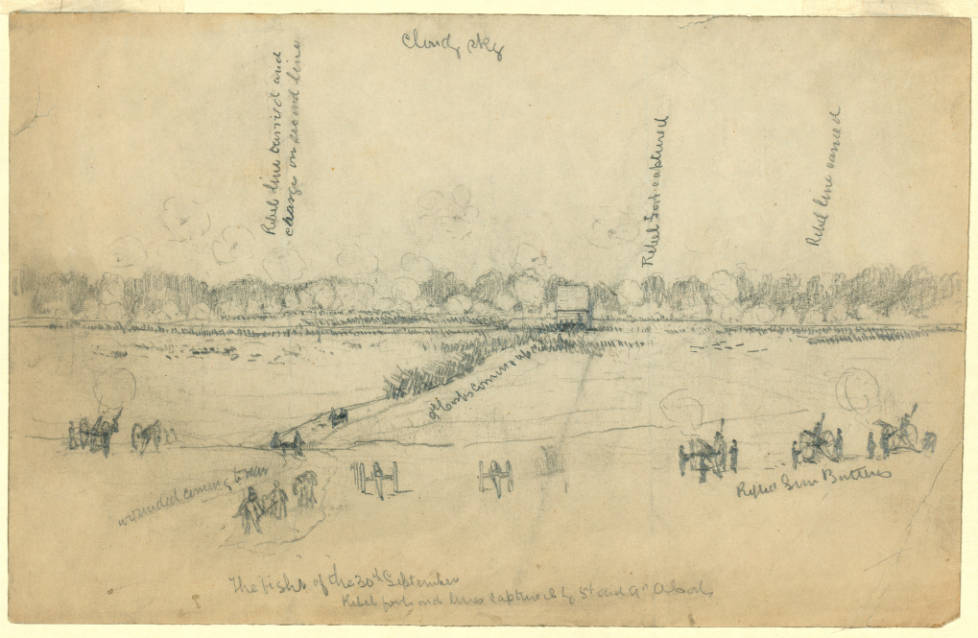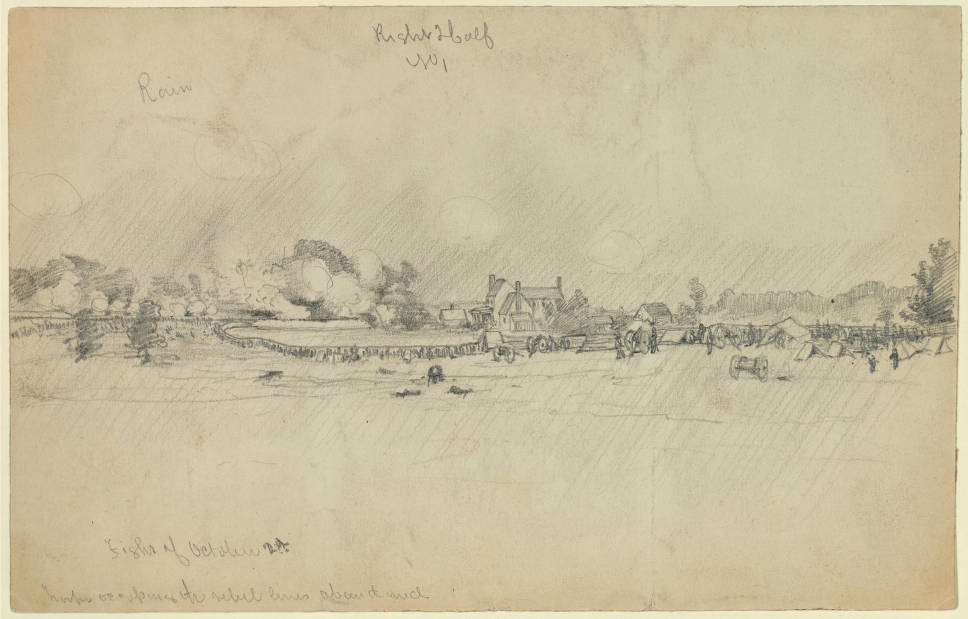Engineers at the Williams House
|
The combination of a photograph,detailed drawing,map, and diary provides an in depth look at construction activities as the federal line expanded in September,1864.
Engineers at the Williams House
0 Comments
Fort Fisher began life as a small, enclosed fort in early fall 1864, when the Federals pushed west from the Weldon Railroad with the objective of the Boydton Plank Road and the South Side Railroad. U.S. forces were checked short of their goal in the Battle of Peebles Farm as the Confederates defended their supply routes and extended their lines for protection. Fort Fisher grew into a large bastioned fort that anchored a refusal in the U.S. line.
On this site we are very interested in changes in the line to reflect changing military circumstances. Detail from an often misidentified photographic print from the National Archives. This is a view of Fort Stedman and Battery X from the front. Photographer was likely Timothy O'Sullivan because his was the only crew known to be operating on and around Hare House Hill in April 1865.
New material has been added to the Edwin Forbes page, annotating his drawing of the18th Corps advance on Petersburg on June 18th and comparing it to a Federal map titled "Sketch of Road From Ponton Bridge at Point of Rocks to Petersburg Showing Line of Works Captured by the18th Army Corps".
A detailed obituary has been added to the page on enlisted artist Andrew McCallum. He had a distinguished post war career. Andrew McCallum Edwin Forbes, Special Artist at Petersburg Fort Hell, like Fort Stedman, (and as its unofficial name suggests) was constructed under severe conditions. It blocked the Jerusalem Plank Road (modern Crater Road), a major highway in to Petersburg. We will, no doubt, have more to add to this topic in the future- it is already linked to many other pages.
The various entries on dams and inundations have been consolidated. This is where you will find discussions of Gracie's Dam, Harrison's Creek Dam, Rohoic Creek Dam, and the Hatcher's Run Dam, thus far.
The amazing appearing and disappearing Battery XXVII, plus another signal tree.... Take a look.5/25/2017 The lines on each side were frequently re-figured. Here is one example.
Plus, thanks to Edward Alexander, we've posted a new signal tree picture. Above is a second drawing of the Peebles Farm/Pegram's Farm Operations, 30 Sept. -2 Oct. by the same unidentified artist. Drawn for Leslie's Illustrated Newspaper, both images are in the collection of the New-York Historical Society. The six-sided redoubt was afterwards reversed by Federal soldiers and renamed Fort Wheaton after Capt. J. H. Wheaton, 1st Michigan Infantry, killed during the fighting.
DL began a stub of an entry on Pegram's Farm inspired by a newly recognized drawing and a woodcut of the house and its later ruins. There was significant fighting on this property (owned by the Civil War Trust) on several occasions, particularly on October 2, 1864, when overly confident Federals advancing too far were repulsed by a series of counterattacks. Not a great moment for the Yankees but they ended up retaking and holding the ground. Fort Welch was erected on the site.
|
The Petersburg Project"It was, after all, a Civil War." Archives
April 2024
Categories |




 RSS Feed
RSS Feed
